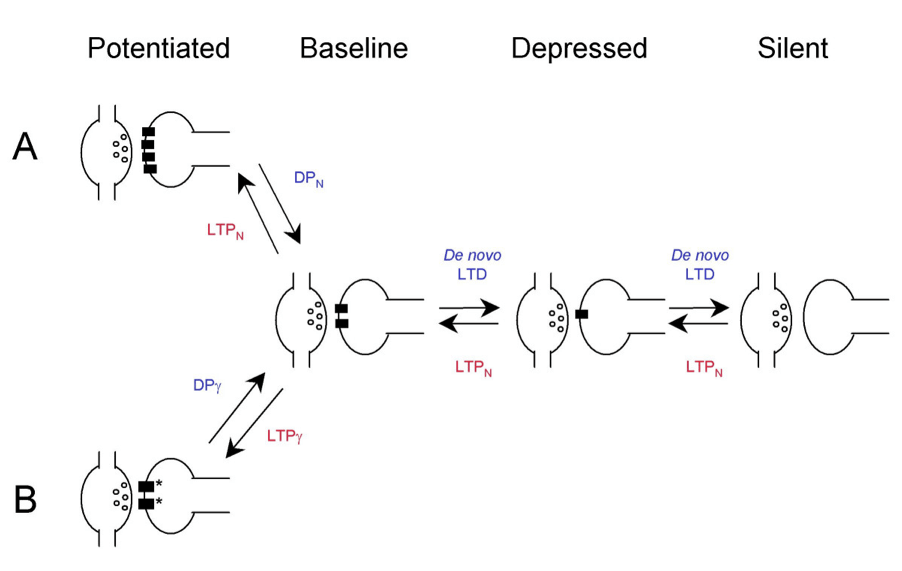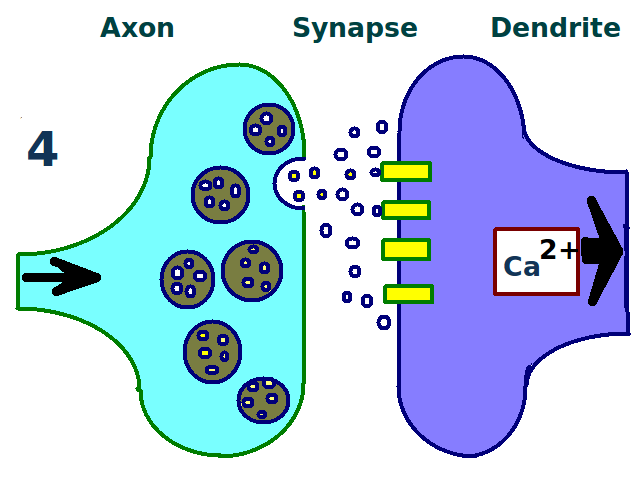What is the Difference Between Long-term Depression and Long-term Potentiation
The key difference between long-term depression and long-term potentiation is that long term depression is the process of reduction in the efficacy of neuronal synapses that last hours or longer, while long term potentiation is the process of strengthening neuronal synapses based on recent patterns of activity.
Long-term depression and long-term potentiation are two terms that are commonly discussed in neurophysiology. Neurophysiology is the area of study of nerve cells. It is a branch of neuroscience and physiology. It focuses mainly on the functioning of the nervous system.
CONTENTS
1. Overview and Key Difference
2. What is Long-term Depression
3. What is Long-term Potentiation
4. Similarities – Long-term Depression and Long-term Potentiation
5. Long-term Depression vs Long-term Potentiation in Tabular Form
6. Summary – Long-term Depression vs Long-term Potentiation
What is Long-term Depression?
Long-term depression is the process of reduction in the efficacy of neuronal synapses that last hours or longer. It is the opposite of long-term potentiation. It occurs in many areas of the central nervous system (CNS) with varying mechanisms. The long term depression is one of the processes that help to weaken specific synapses in order to make use of synaptic strengthening created by long-term potentiation. This is a very important and necessary process because if it is allowed to continue synapses strengthening by long term potentiation, the synapses will ultimately reach a level of efficiency that will inhibit the encoding of new information.

Figure 01: Long-term Depression
Long term depression is a form of synaptic plasticity. It is characterized by a decrease in postsynaptic strength. Long term depression takes place through dephosphorylation of AMPA receptors and facilitating their movement away from the synaptic junction. It mainly takes place in the hippocampus and cerebellum region of the brain. It can also involve areas of the cortex that control memory and learning. The main purpose of this process is to remove old memory traces and facilitate the formation of new memory traces. Furthermore, long term depression also sharpens an image by enhancing the contrast. In addition, it plays a role in executing motor memory.
What is Long-term Potentiation?
Long term potentiation is the process of strengthening neuronal synapses based on recent patterns of activity. It is a process by which the synaptic connections between neurons become stronger with frequent activation. Long term potentiation is a way in which the brain changes in response to experience. Therefore, it may be a mechanism underlying learning and memory. It occurs in many regions of the brain, including the hippocampus, cerebral cortex, cerebellum, amygdala and other regions.

Figure 02: Long-term Potentiation
There are many mechanisms of long term potentiation. Among them, one of the most studied mechanisms is NMDA receptor-dependent long term potentiation. In this mechanism. AMPA receptor located near NMDA receptor bind to glutamate. This depolarizes the postsynaptic neuron and removes Mg2+ blockage in the NMDA receptor. This allows Ca2+ to flow through the NMDA receptor. Ultimately, this mechanism strengthens synapses.
What are the Similarities Between Long-term Depression and Long-term Potentiation?
- Long-term depression and long-term potentiation are two terms commonly discussed in neurophysiology.
- They are forms of synaptic plasticity.
- They endure changes in synaptic strength induced by specific patterns of synaptic activity.
- Both have important clinical applications.
- Alterations of both can cause neurological diseases.
What is the Difference Between Long-term Depression and Long-term Potentiation?
The long term depression is the process of reduction in the efficacy of neuronal synapses that last hours or longer, while long term potentiation is the process of strengthening neuronal synapses based on recent patterns of activity. So, this is the key difference between long-term depression and long-term potentiation. Furthermore, long-term depression was first discovered by Tim Bliss and Terje Lomo in 1973, while long-term potentiation was first discovered by Terje Lomo in 1966.
The below infographic lists the differences between long-term depression and long-term potentiation in tabular form for side by side comparison.
Summary – Long-term Depression vs Long-term Potentiation
Synaptic plasticity is the ability of synapses to strengthen or weaken over time. It takes place in response to the increases or decreases in synaptic activity. Long-term depression and long-term potentiation are forms of synaptic plasticity. Long-term depression is the process of reduction in the efficacy of neuronal synapses that last for hours or longer, while long term potentiation is the process of strengthening neuronal synapses based on recent patterns of activity. Thus, this summarizes the difference between long-term depression and long-term potentiation.
Reference:
1. “Long Term Depression.” An Overview | ScienceDirect Topics.
2. “Long-Term Potentiation.” An Overview | ScienceDirect Topics.
Image Courtesy:
1. “Bi-directional modulation of AMPA receptor” By Andreas Lüthi, Martin A Wikström, Mary J Palmer, Paul Matthews, Tim A Benke, John TR Isaac, Graham L Collingridge – Bi-directional modulation of AMPA receptor unitary conductance by synaptic activity. BMC Neuroscience 2004, (5)44. doi:10.1186/1471-2202-5-44 (CC BY 4.0) via Commons Wikimedia
2. “LTP Fourth Stage” By Tomwsulcer – Own work (CC0) via Commons Wikimedia
ncG1vNJzZmivp6x7pbXFn5yrnZ6YsqOx07CcnqZemLyue9ahmK1lmah6tbTEZpuinpaav6a6wp5km52krLKmuoylpqefXamys7mMnZypqpWowKq7zWaYp5xdobyvs4ytnKulXaW8tbHNraCarJmku3A%3D